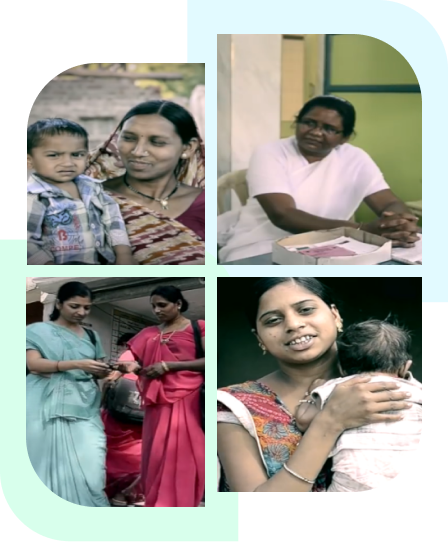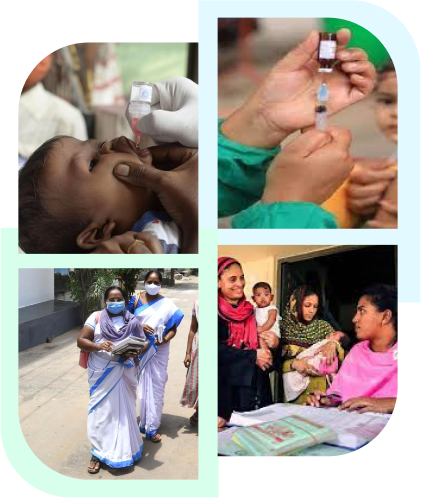
A population of 1 Million has been served across many services from Family Planning to Pregnancy Tracking and more
Over 187124 Field Health
Workers use
the application
The application has been in operation for a year and is about to touch around 300 Million in about 2 months.
It adopts a holistic view of the entire mobile health management ecosystem
In primary healthcare, field health workers are the key drivers of care quality, especially in rural, hard-to-access areas, where the general public awareness about health is not distinctly high. In such operating environments, workers function as dispensers of medical services and as counselors and guides. Therefore, there is a need to empower field health workers. More quality needs to be built into their daily work. They need all the help technology can afford them. These workers also need to upgrade their knowledge through continuous learning, which may not always be possible to be built into their daily schedules and work lives.

The answer to all the above and more has manifested in the form of the powerful eKavach portal, currently being implemented in the populous Indian state of Uttar Pradesh. eKavach was implemented by leveraging MEDplat. Initially, there were two goal-specific modules – Japanese Encephalitis (JE) Vaccination Management and Nutrition Management. Uttar Pradesh tackles the annual problem of Japanese Encephalitis and requires a concerted, technology-aided smart approach to deal with it.
Both of these have dedicated workflows defined with different role-based users who are assigned tasks based on their skill and location in the state's public health ecosystem hierarchies. Currently, more modules have been added to the eKavach platform. These include Family Health Survey, Reproductive and Child Health, Non-Communicable Diseases, Immunization, Learning Management System, National Programme for Control of Blindness, etc.
eKavach helps segregate beneficiaries based on their eligibility for various services. The platform generates alerts to the assigned field-level workers based on segregation and eligibility. Further, the system has a provision for follow-ups, too.
There is also an able web interface that provides real-time information to medical officers for timely support and supervision, monitoring and incentive management.
Tracking of beneficiaries and service follow-ups
Complete digitization of public health service deliveries
Improved coverage of health services to include the underserved